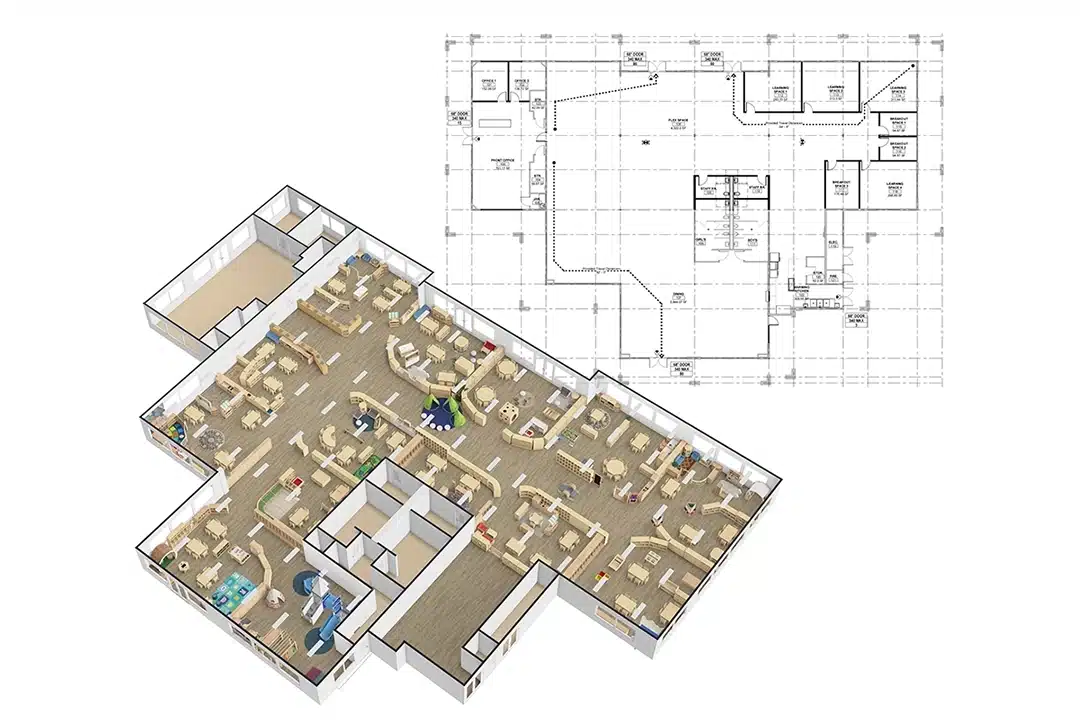Why do some classrooms feel chaotic while others run smoothly? Why do some students thrive while others constantly test boundaries? The answer often lies in the classroom rules for high school. Without structure, teenage learners quickly become disengaged, disruptive, or both. But what kind of rules actually work with adolescents—and how do we make them stick?
The best classroom rules for high school are clear, fair, and consistently enforced. They help teachers create an environment where students know what’s expected, feel safe to participate, and understand the value of mutual respect. These rules aren’t about control—they’re about building trust and supporting academic and social development.
Teenagers crave boundaries—even when they pretend they don’t. That’s why the way we build, communicate, and enforce classroom rules is more important than ever.
Why Do High School Students Need Classroom Rules?
High school students are at a developmental crossroads. They’re asserting independence, forming identities, and dealing with increasing academic and social demands. In such a dynamic environment, classroom rules provide essential structure.
Without a clear behavioral framework, even the most gifted students can struggle to stay on track. Rules offer boundaries that help students manage distractions, navigate peer interactions, and focus on learning. Far from being restrictions, rules function as guidelines for mutual respect and academic success.
Rules help prevent conflicts, maintain order, and support emotional safety. They give students a predictable environment—critical for adolescents who may be dealing with uncertainty outside the classroom. These rules also model what is expected in adult society: accountability, cooperation, and communication.
Importantly, classroom rules are not about control. They are about creating a community where every student feels safe, valued, and able to participate.

The Importance of High School Classroom Rules and Expectations
Clear expectations influence how students behave. When students understand what is acceptable and what is not, they’re better equipped to meet academic goals and contribute positively to the classroom environment.
Rules and expectations serve several crucial functions:
- Promote equality: When enforced consistently, rules ensure that every student is treated fairly.
- Encourage personal responsibility: High school students are learning to manage their own behavior. Rules help them practice self-regulation.
- Reinforce respect: Expectations regarding tone, language, and behavior build a respectful culture.
- Protect learning time: Time spent addressing misbehavior is time lost from instruction. Rules minimize disruption.
- Support social development: Behavioral norms help students learn cooperation, empathy, and effective communication.
Well-communicated expectations also build trust. When students know what their teachers expect, and those expectations are reasonable and achievable, they feel more secure and motivated.

Classroom Rules Classification for High School
Not all classroom rules are created or implemented the same way. In most high schools, rules fall into three key categories. Understanding how these categories function can help educators maintain both authority and flexibility in their classrooms.
- Rules discussed by the whole class:
Some of the most effective classroom rules are those developed collaboratively. Involving students in rule-making builds ownership and investment. Students are more likely to follow rules they’ve had a hand in creating. - Rules assigned by the teacher:
Some rules must be clearly defined and enforced by the teacher from day one. These include safety rules, academic integrity policies, and procedural expectations that keep the classroom functioning smoothly. - Rule revisions and changes that occur during the school year:
No rulebook is perfect. As the year progresses, new issues may arise or old rules may stop working. Teachers should remain open to revisiting and adjusting rules based on classroom dynamics and student feedback.

Developing Classroom Rules for High School Ideas
Creating effective classroom rules requires strategic planning. The process should be both thoughtful and inclusive. Below are key steps and considerations for building a strong rule system.
1. Establish a Foundation
Before drafting rules, define the purpose. Are you aiming to improve focus, reduce conflict, or encourage collaboration? Clarifying your goals helps ensure that the rules serve a meaningful function and not just tradition.
Foundational principles might include respect, responsibility, and honesty. These guide the tone and focus of your specific rules.
2. Involve Students in Developing Classroom Rules
Engagement is crucial. Allow students to voice their opinions on what makes a classroom safe, respectful, and productive. This doesn’t mean they dictate the entire rulebook—but their input creates a sense of investment.
This can be done through open discussions, anonymous surveys, or group brainstorming. Teachers may facilitate by grouping ideas and turning them into actionable statements.
3. Be Clear and Specific
Ambiguous rules are open to interpretation. Instead of saying “Behave responsibly,” opt for “Keep your hands and feet to yourself” or “Bring required materials every day.”
Clear language prevents misunderstandings and allows for fair enforcement. Students should never be confused about what a rule means or why it matters.
4. Start With Respect
Respect is the linchpin of every rule. It covers how students interact with the teacher, with each other, and with school property. Emphasizing respect in rule-making helps prevent a wide range of behavioral issues.
You might include respect-based rules such as “Speak kindly to classmates,” “Follow teacher directions the first time,” and “Handle classroom materials with care.”
5. Framework Rules for Positive and Negative
Good rule systems balance what students should avoid and what they should do. For every prohibition (e.g., “No phones during instruction”), include an expectation (e.g., “Stay engaged and participate actively”).
This balance keeps the tone positive and encourages growth, rather than merely punishing mistakes.
6. Make Consequences Clear
Rules without consequences are suggestions. Students must know what will happen if they violate a rule. Equally important, they should understand the reasoning behind the consequence.
Establish a tiered response system that includes:
- Warnings
- Reflection assignments
- Parent communication
- Office referral (if necessary)
Consequences should be fair, proportional, and consistent. Whether it’s a warning, loss of privileges, or a referral, clarity reinforces accountability.
7. Consider Students’ Developmental Level
High schoolers are not elementary students. They require a more nuanced approach that considers peer pressure, self-esteem, and identity development.
Avoid overly simplistic or patronizing rules. Focus instead on principles that resonate with their increasing maturity and desire for autonomy.
8. Check and Review Rules Regularly
Effective rules are living policies. They need regular check-ins, especially after school breaks or if disruptions become frequent.
Take time to ask:
- “What rule do we struggle with most?”
- “Which rule has helped us learn better?”
- “Are these rules still serving us well?”
can re-engage students and identify areas for adjustment.
9. Collaborate With Colleagues
Aligning your classroom rules with those of other teachers ensures consistency across departments or grade levels. Collaboration also allows you to share strategies that work and troubleshoot recurring issues.

Examples of Classroom Rules for High School
High school classrooms benefit from clearly defined, age-appropriate rules that foster accountability and promote academic integrity. Below are examples of practical and effective rules often seen in secondary classrooms.
- Arrive on time
Punctuality shows respect for the teacher and peers. It maximizes learning time and reduces disruption. Students should be in their seats, ready to work, before the bell rings. - No cell phones or other electronic devices
Digital distractions can derail focus. Phones and smartwatches should be silenced and stored unless permitted for instructional purposes. Violations may result in confiscation or additional consequences. - Take care of personal needs before class
Frequent requests to leave class for the restroom, water, or locker can derail instruction. Students should be reminded to manage these needs during breaks unless emergencies arise. - Responsible for pre- and post-class affairs
Students should be ready with materials before class begins and clean up their areas afterward. Transition time should be minimized to maximize learning. - Do not pack up before class ends
Premature packing signals disengagement and distracts others. Teachers should emphasize that class is in session until the dismissal signal, not before. - Use polite speech
Respectful language fosters a safe environment. Students must avoid name-calling, sarcasm, slurs, and inappropriate expressions. Politeness is expected even during disagreements. - Speak when allowed
Students should raise their hands and wait to be called on before speaking. Side conversations and interruptions are discouraged to maintain order and respect. - Cheating is strictly prohibited
Academic integrity is non-negotiable. Copying homework, using unauthorized aids during tests, or plagiarizing content violates this core rule and can result in serious consequences. - Listen to the teacher’s lecture
Attentiveness shows respect and promotes retention. Side conversations, use of devices, or inattentive behaviors should be addressed promptly. - Classes last until the bell rings
Students should remain engaged until the class officially ends. Teachers might include short reflections or exit tickets to maximize the final minutes. - Eating and drinking are prohibited
Unless medically necessary or permitted by school policy, consuming food or drink is not allowed in most classrooms to maintain cleanliness and prevent distractions. - Bring the required materials every day
Coming prepared supports productivity. Teachers can create checklists or assign “supply monitors” to encourage consistency. - Submit homework on time
Deadlines teach accountability. Late submissions may affect grades and disrupt grading schedules. If issues arise, communication before the due date is critical. - Make up missed homework
Absence does not excuse responsibility. Students should proactively check for missed work, consult peers or online platforms, and complete all assignments promptly.

How to Communicate Classroom Rules Effectively?
No matter how strong your rules are, they won’t work if students don’t understand them—or believe in them. Communication is the bridge between expectations and behavior.
Start on the first day. Dedicate time to go over each rule, explain its purpose, and invite questions. Use scenarios, examples, and student input to bring rules to life. Don’t just tell—teach.
Reinforce often. Post rules visibly. Posters, bulletin boards, slide decks, and even student-designed rule charts help embed expectations in students’ minds. Refer to them regularly. Praise students when they follow them. Use consistent language. If a rule is broken, respond with the same language you used to teach it. This creates clarity and avoids the perception of bias.
Most importantly, lead by example. Students will mirror the respect, integrity, and consistency they see in you. If the rule is no interruptions, don’t interrupt students. If the rule is punctuality, be on time.
Effective communication builds trust. And trust is the foundation of every rule that works.
Classroom Rules vs. School Policies: What’s the Difference?
Although often used interchangeably, classroom rules for high school and school policies serve distinct purposes and operate at different levels. Understanding the distinction helps educators apply both effectively.
| Aspect | Classroom Rules | School Policies |
|---|---|---|
| Scope | Specific to one teacher’s classroom | Applies to the entire school or district |
| Created By | Individual teacher or with student input | School board, administrators, or district officials |
| Examples | Raise your hand before speaking, bring materials daily | No weapons on campus, dress code enforcement |
| Flexibility | Adjustable depending on class needs | Generally fixed and standardized |
| Enforcement | Managed by the classroom teacher | Enforced by administrators or through disciplinary action |
| Communication | Communicated at the start of the course | Shared in handbooks, websites, or orientation |
| Purpose | To foster a productive learning environment | To ensure legal compliance, safety, and a consistent learning culture |
While school policies form the non-negotiable framework for behavior and safety, classroom rules tailor that framework to fit the dynamics of each individual class. Teachers operate within the boundaries of school policy but use classroom rules to manage day-to-day behavior.
Classroom Rules for High School Adapted to Different Learning Environments
Modern high schools are not confined to traditional classrooms. Learning happens in labs, gyms, art studios, virtual platforms, and even outdoor spaces. Each of these environments presents unique challenges that require specific adaptations of classroom rules.
In a science lab, rules may include:
- Follow all safety protocols before touching any equipment
- No eating, drinking, or open containers allowed
- Wear goggles and protective gear at all times
- Do not start experiments without teacher approval
In a physical education class:
- Wear appropriate attire and footwear
- Respect personal space during physical activities
- Use sports equipment properly and return it after use
- Stay within designated activity zones
In an art studio:
- Handle all materials with care
- Clean up your workstation before leaving
- Respect others’ creative projects and space
In virtual or hybrid learning:
- Log in on time and with your full name
- Keep your camera on unless otherwise permitted
- Mute microphone when not speaking
- Submit assignments digitally by deadline

The Role of Teachers in Enforcing Classroom Rules
Teachers are the stewards of the classroom culture. Their role in enforcing rules extends beyond correcting behavior—it involves modeling, mentoring, and managing.
Modeling
Students notice what teachers do even more than what they say. A teacher who listens attentively, speaks respectfully, and admits mistakes reinforces the behavior they wish to see.
Monitoring and observation
Effective teachers scan the room constantly, picking up on disruptions early. Subtle cues—eye contact, proximity, hand gestures—can correct off-task behavior before it escalates.
Consistency
Nothing undermines rules faster than selective enforcement. Teachers must apply consequences fairly, regardless of who is involved. This builds trust and reduces accusations of bias.
Feedback and Correction
When rules are broken, the response should be firm but constructive. Immediate, calm correction paired with an explanation helps students learn from mistakes.
Positive Reinforcement
Acknowledging good behavior is just as important as correcting bad behavior. Praise, points, privileges, or simple verbal affirmation all reinforce rule adherence.
Student-Teacher Relationship Building
When students feel respected and understood, they are more likely to comply with classroom norms. Relationship-building isn’t a bonus—it’s a foundational part of classroom management.
FAQs
- Why do high school students struggle with classroom rules?
High school students often challenge rules because they are exploring independence and identity. Clear communication, involvement, and consistency help reduce resistance. - How should teachers handle students who repeatedly break rules?
Use a combination of consistent consequences and individualized support. Understand the underlying causes—emotional, academic, or social—and work toward solutions rather than punishment alone. - What if students refuse to follow rules made by the class?
Remind them that the rules were created collectively and exist to support everyone. Reinforce that class participation includes honoring group agreements. - Should all students have the same rules, or should there be flexibility?
Rules should be consistent, but application may vary slightly based on individual needs. For example, students with IEPs or ELL backgrounds may need accommodations. - How can teachers make classroom rules more engaging?
Use scenarios, student skits, or real-life examples to illustrate the value of rules. Let students “teach back” the rules to each other in creative ways. - Can rules change during the year?
Yes, and they should. Periodic reflection and updates help keep rules relevant, effective, and respected.
Conclusion
Classroom rules for high school are more than a list on the wall—they are the pillars of a functional, fair, and focused learning environment. They teach responsibility, foster respect, and create a culture where all students can thrive.
By involving students in rule creation, ensuring clarity and fairness, and adapting as necessary, teachers create classrooms that are not only orderly but also empowering. The ultimate goal isn’t compliance—it’s community.
A well-structured high school classroom, guided by meaningful and well-communicated rules, prepares students not just for tests and graduation, but for life.










